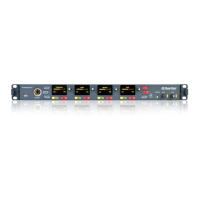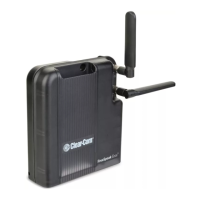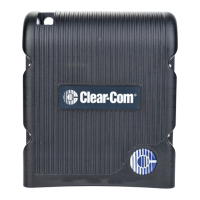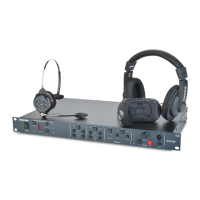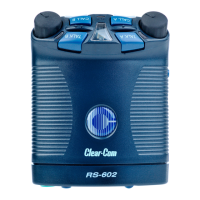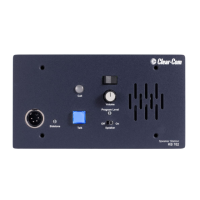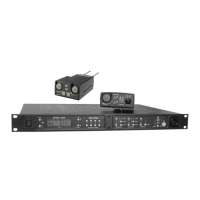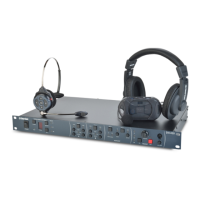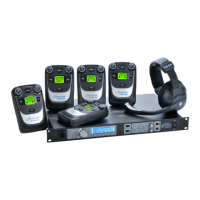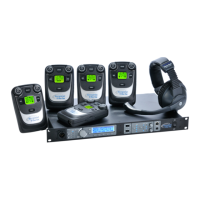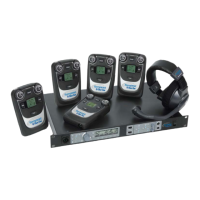User Guide| FreeSpeak II for Eclipse HX
Walk through all of the areas where beltpack users will typically be moving, and note any areas of
weak signal, dropout, or disconnection from the system. Pay special attention to the overlap areas
between transceiver coverage zones, making sure sufficient signal strength is there from each of
the transceivers to make a clean handoff between them for the beltpack.
7.7 Coverage areas under various conditions
Just as with any other product communicating with radio waves, the effective distance between
the beltpack and the transceiver (the range) will differ depending on the particular environment in
which it is being used. Radio waves can be attenuated by walls, floors, ceilings, trees, shrubbery,
the human body (such as an audience), and numerous other objects. They can be reflected and/or
stopped by metallic objects such as structural beams, safety doors, lighting equipment and truss,
bodies of water, and so on.
Under ideal conditions, the maximum range between an FS II beltpack and a transceiver is 500
metres. Typical distances are between approximately 50 metres (about 160 feet) and 150 metres
(about 485 feet), depending on the particular environment.
As the transceiver requirements for a particular installation are being determined, keep in mind
both the number of beltpack users who will be working in a particular area (based on the 10
beltpack capacity of each transceiver), and the layout and potential RF attenuating and reflecting
items in the location. Be conservative in distance estimates to make sure that enough transceivers
are included to provide the necessary coverage for the installation. Remember that additional
transceivers may be added to a Matrix.
7.8 FS II Transceiver setup rules and tips
Keep the following general rules and tips in mind:
l Keep transceivers high (typically, though lower placements away from interfering objects
can at times be beneficial) and line-of-sight.
l Keep them away from larger metallic objects and surfaces, and from lighting truss.
l Transceiver coverage is circular so put the transceivers in the center of the area in which
coverage is required.
l When overlapping the coverage zones of transceivers to create larger continuous coverage
areas, test the in-between areas with a beltpack for potential areas of low RF signal; adjust
the positioning of the transceivers as needed.
l Because of potential body shielding during movement, it is useful to place two transceivers
in different locations within larger working areas to minimize low-level signals and potential
signal dropouts.
Page 80
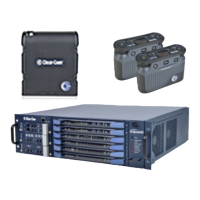
